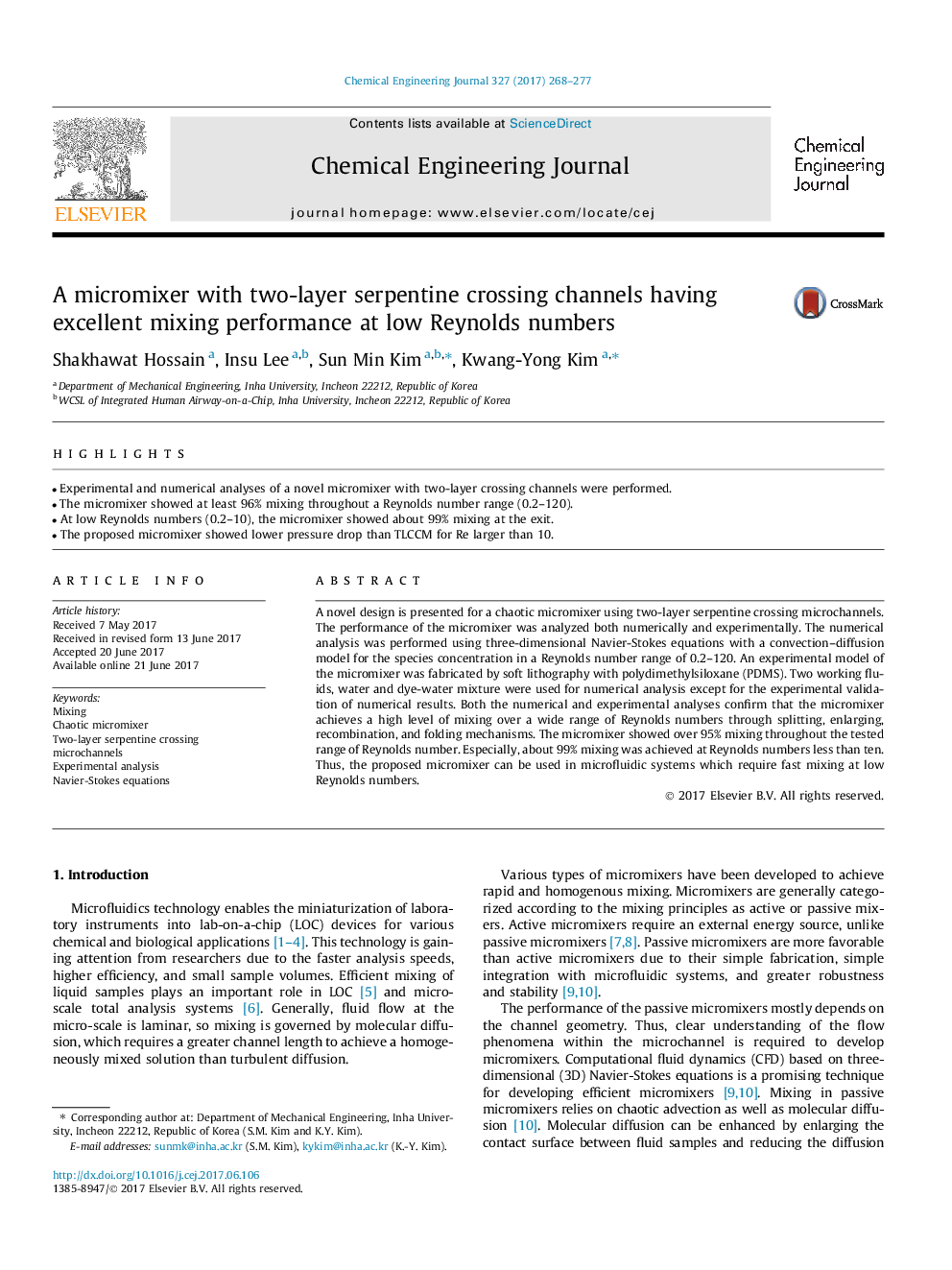| Article ID | Journal | Published Year | Pages | File Type |
|---|---|---|---|---|
| 6465144 | Chemical Engineering Journal | 2017 | 10 Pages |
â¢Experimental and numerical analyses of a novel micromixer with two-layer crossing channels were performed.â¢The micromixer showed at least 96% mixing throughout a Reynolds number range (0.2-120).â¢At low Reynolds numbers (0.2-10), the micromixer showed about 99% mixing at the exit.â¢The proposed micromixer showed lower pressure drop than TLCCM for Re larger than 10.
A novel design is presented for a chaotic micromixer using two-layer serpentine crossing microchannels. The performance of the micromixer was analyzed both numerically and experimentally. The numerical analysis was performed using three-dimensional Navier-Stokes equations with a convection-diffusion model for the species concentration in a Reynolds number range of 0.2-120. An experimental model of the micromixer was fabricated by soft lithography with polydimethylsiloxane (PDMS). Two working fluids, water and dye-water mixture were used for numerical analysis except for the experimental validation of numerical results. Both the numerical and experimental analyses confirm that the micromixer achieves a high level of mixing over a wide range of Reynolds numbers through splitting, enlarging, recombination, and folding mechanisms. The micromixer showed over 95% mixing throughout the tested range of Reynolds number. Especially, about 99% mixing was achieved at Reynolds numbers less than ten. Thus, the proposed micromixer can be used in microfluidic systems which require fast mixing at low Reynolds numbers.
